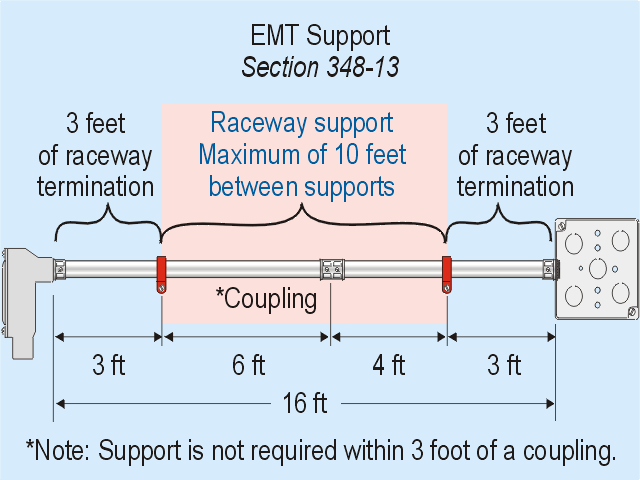Art 358 States:
"(A) Securely Fastened. EMT shall be securely fastened in place at least every 3 m (10 ft). In addition, each EMT run between termination points shall be securely fastened within 900 mm (3 ft) of each outlet box, junction box, device box, cabinet, conduit body, or other tubing termination."
Is a coupling considered a "tubing termination" ? Specifically, if one has a
3/4 rigid 90 stubbed from a slab then transitioned to EMT, does the EMT have to be strapped with 3 ft of the transition ?
"(A) Securely Fastened. EMT shall be securely fastened in place at least every 3 m (10 ft). In addition, each EMT run between termination points shall be securely fastened within 900 mm (3 ft) of each outlet box, junction box, device box, cabinet, conduit body, or other tubing termination."
Is a coupling considered a "tubing termination" ? Specifically, if one has a
3/4 rigid 90 stubbed from a slab then transitioned to EMT, does the EMT have to be strapped with 3 ft of the transition ?



